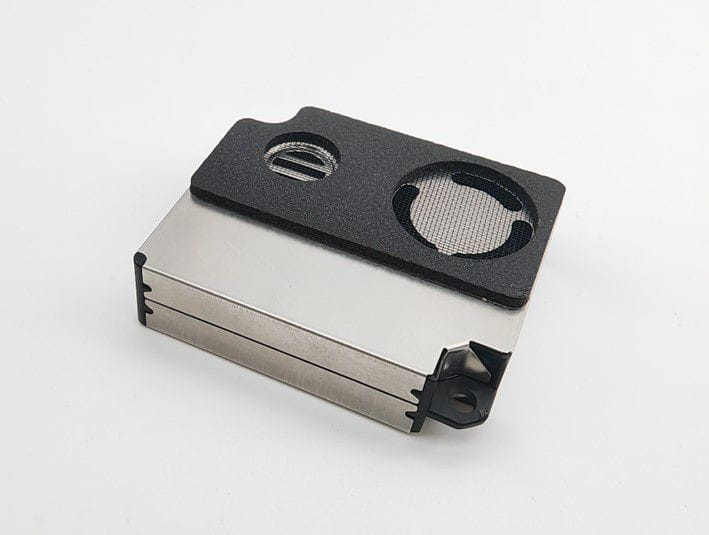Air pollution is everywhere. No matter where you live, you can't escape it, and the pollutant that affects people the most is particulate matter. We all know that atmospheric particulate matter is a general term for all kinds of solid and liquid particulate matter in the atmosphere, often abbreviated as PM and used as a measure of air pollution.
According to the diameter, atmospheric particulate matter can be divided into three types:
Total Suspended Particulate Matter with a diameter less than 100 microns (TSP)
Particulate matter with a diameter less than 10 microns (PM10)
Fine particulate matter less than 2.5 microns in diameter (PM2.5)
On September 22, 2021, the World Health Organization (WHO) issued global Air Quality Guidelines (AQG2021). In terms of the guideline value, AQG 2021 version tights the annual mean value of PM2.5 and PM10, setting the annual mean value of PM2.5 to 5μg/m³ and the annual mean value of PM10 to 15μg/ m3.
Accurate detection of PM2.5 is becoming more and more important based on this. Laser dust sensors using laser LED as light source, when the fine particulate matter in the air after a constant flow fan drive into the area, the laser beam laser scattering will occur; the photoelectric detector is placed in a proper place, and we receive only scattered light. Then, through the photoelectric detector generated signals of the photoelectric effect, after amplification circuit treatment, the fine particle density can be obtained.
PULSE-Sensor PS5308-M/B is a general-purpose and miniaturized laser dust sensor module that can detect dust particles in the air based on the principle of laser scattering through professional algorithms and calibration detection processes.

PS5308-M/B
According to the diameter, atmospheric particulate matter can be divided into three types:
Total Suspended Particulate Matter with a diameter less than 100 microns (TSP)
Particulate matter with a diameter less than 10 microns (PM10)
Fine particulate matter less than 2.5 microns in diameter (PM2.5)
On September 22, 2021, the World Health Organization (WHO) issued global Air Quality Guidelines (AQG2021). In terms of the guideline value, AQG 2021 version tights the annual mean value of PM2.5 and PM10, setting the annual mean value of PM2.5 to 5μg/m³ and the annual mean value of PM10 to 15μg/ m3.
Accurate detection of PM2.5 is becoming more and more important based on this. Laser dust sensors using laser LED as light source, when the fine particulate matter in the air after a constant flow fan drive into the area, the laser beam laser scattering will occur; the photoelectric detector is placed in a proper place, and we receive only scattered light. Then, through the photoelectric detector generated signals of the photoelectric effect, after amplification circuit treatment, the fine particle density can be obtained.
PULSE-Sensor PS5308-M/B is a general-purpose and miniaturized laser dust sensor module that can detect dust particles in the air based on the principle of laser scattering through professional algorithms and calibration detection processes.

PS5308-M/B
Applications
• Air purifiers
• Make-up air systems
• Air conditioners
• Car Air Purifiers
• Air quality detectors
• Environmental Monitoring
• Hand-held air quality detectors
Features
The measurement accuracy is high, and the minimum resolution particle diameter is 0.3μm. It has advantages of accurate data, small sizes, low power consumption, good consistency and real-time response.
| Parameters | Indexes |
| Measuring types | PM2.5 |
| Measuring ranges | 0 to 1000 ug/ m³ |
| Consistency | Greater than and equal to 100 ug/ m³:±10% |
| Less than and equal to 100 ug/ m³:±10 ug/ m³ | |
| Accuracy (reference standard:TSI 8530) | Greater than and equal to 100 ug/ m³:±10% Less than and equal to 100 ug/ m³:±10 ug/ m³ |
| Data Interface | UART 9600 bps |
| Into the outlet | Front |
| Power supply | DC 5±0.5V |
| Working conditions | Temp: -15℃ to 60℃ |
| Humidity: 0 to 90% RH(non-condensing) | |
| Storage conditions | Temp: -30℃ to 70℃ |
| Humidity: 0 to 90% RH(non-condensing) | |
| Weights | 24g |
| Sizes | 48mm*37mm*12mm |
| MTTF | Greater than and equal to 30000H |
| Intermittent mode: Intermittent operation |
PS5308-M/B has features of a dual-ear positioning hole design, solid and convenient installation, good consistency, stability, serial port output and PWM output capacity, small sizes, and easy to integrate applications.
Previous: The Overview of Measurement Methods of Particles
Next: Development Status and Trend of Measuring Light Scattering Particles




